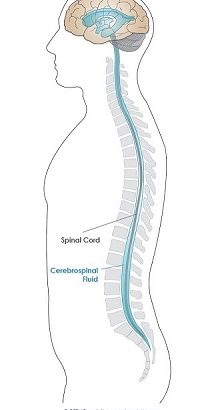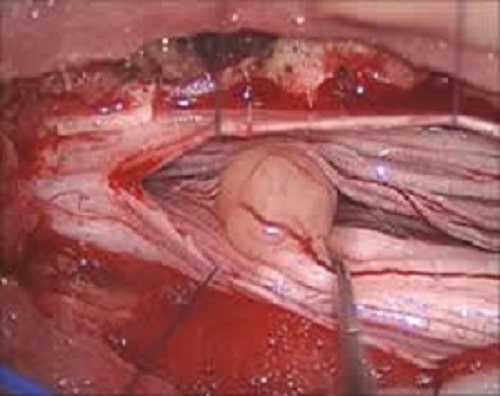symptoms and treatment for types of brain and spinal cord ependymoma tumors
Ependymomas are cancerous tumors that grow in your brain or any part of the spine, including your neck and upper and lower back. They form at first in your ependymal cells in the middle of your spinal cord and in the fluid-filled spaces in your brain known as ventricles.
While tumors may spread to more than one area of your brain or spine, they're almost never found elsewhere in the body.
Depending on where the cancer is, your doctor may recommend surgery, chemotherapy, or radiation. But make sure you take care of your mental health, too.
What is ependymoma?
Ependymoma is a primary tumor, which means that it starts in either the brain or spine. The brain and spine are part of the central nervous system (CNS). Primary brain and spinal cord tumors are typically grouped by where the cells start.
The most common types of cells in the central nervous system are neurons and glial cells. Tumors from neurons are rare. Glial cells are the cells that support the brain. Tumors that occur from these cells are called gliomas.
Glial cell subtypes of the CNS include:
- Astrocytes
- Oligodendrocytes
- Ependymal cells
CNS brain tumors associated with all three types of glial cells are recognized by the World Health Organization as astrocytomas , oligodendrogliomas and ependymomas.
Ependymoma Symptoms
 Most ependymomas start out small and grow slowly over years, so you may not notice any problems at first.
Most ependymomas start out small and grow slowly over years, so you may not notice any problems at first.
When symptoms start, the way you feel depends on where the tumor is. You may have seizures or frequent headaches. You may also feel nauseous or throw up. You could lose your balance or get blurry vision.
Other symptoms are:
- Feel confused or irritable
- Have a hard time peeing
- Stiffness or pain in your neck or back
- Weakness in your legs
If your baby has an ependymoma, one of the first symptoms you may notice is that he has a larger than usual head.
Causes
Doctors aren't sure what causes ependymomas. But your chances of getting the disease go up if you have a genetic condition called neurofibromatosis type 2.
Ependymomas happen as often in men as women. Among adults, you're most likely to get the tumors if you're in your 40s to 60s. For children, about 30% of ependymoma cases happen in kids under 3.
Types of Ependymomas
You may hear your doctor talk about which type of ependymoma you have. There are four kinds, based on where your cancer starts and how fast it grows.
Subependymomas (grade I). These usually show up near a ventricle in the brain and grow slowly. They happen most often in adults and older men.
Myxopapillary ependymomas (grade I). These happen most often in the spinal cord of young adults. They grow slowly.
Ependymomas (grade II). The most common type of ependymoma, this tumor is usually found in your brain.
Anaplastic ependymomas (grade III). These almost always happen in your brain or skull and typically grow faster than other types of ependymomas.
Most ependymomas in young kids grow near the base of the brain. The majority of spinal tumors happen in those over age 12.
How do ependymomas form?
 Scientists believe they develop from precursor cells to the ependymal cells. These cells line the ventricles (fluid-filled spaces in the brain) and the central canal of the spinal cord.
Scientists believe they develop from precursor cells to the ependymal cells. These cells line the ventricles (fluid-filled spaces in the brain) and the central canal of the spinal cord.
The tumor can occur anywhere in the CNS, including the brain and the spinal cord. The cause of ependymoma is not known.
Do they spread?
Sometimes, tumor cells can spread in the cerebrospinal fluid (CSF). They may spread to one or multiple areas in the brain, spine, or both.
Although it is rare, the tumor can spread to other parts of the body.
Who does ependymoma effect?
Ependymomas can occur in both children and adults. It can occur in males slightly more often than females. It also occurs in white people more often than those of other ethnicities.
How often do ependymomas form in children?
While there are a fewer number of children Ependymomas diagnosed than adults each year, among the children diagnosed each year, it is more common among the pediatric community than the adult community.
Ependymomas are the third most common form of childhood brain and spine tumors. Most occur in young infants and children. The majority occur in the brain. Often they are seen in the back part of the brain (the posterior fossa).
- In children aged 0-14 years, ependymomas accounted for 5.7% of all tumors diagnosed. Approximately 185 children are diagnosed per year.
- In children aged 15-19 years, ependymoma accounted for 4% of all tumors diagnosed. Approximately 50 teenagers are diagnosed per year.
- The incidence in children (aged 0-19 years) was similar in males and females. The incidence of variants is higher in males than females.
How often do ependymomas form in adults?
The majority of adult ependymomas occur in the spine.
- In adults 20+ years, ependymomas accounted for 1.9% of all tumors diagnosed. Approximately 1,100 adults are diagnosed per year.
- Ependymomas / anaplastic ependymomas occur with similar incidence in males and females. The incidence of variants is higher in males than females. The incidence of both ependymomas/anaplastic ependymomas and variants was higher in whites than blacks.
What age groups do ependymomas affect?
Although relatively uncommon, the disease can occur in any age group. Tumors of the posterior fossa (back part of the brain) are much more common in the pediatric population, and spinal cord tumors are more common in adults. The more malignant anaplastic ependymomas are more common in adults.
Is ependymoma cancer?
All grades of ependymoma tumors are considered cancer. Like other primary brain and spinal cord tumors, these cancers are different in that they tend not to spread to other parts of the body, but can recur and require treatment. As with other cancers – some can be cured but others cannot.
Diagnosis
Your doctor may do these tests to help figure out if you have an ependymoma:
Physical exam. Your doctor checks your body and asks about your health and medical history.
Neurological exam. Your doctor will have you move around to look at how your brain, nerves, and spinal cord are working.
MRI (magnetic resonance imaging). This scan uses magnets and X-rays to make detailed pictures of your organs. You'll likely get a shot of a dye that collects around cancer cells so they show up better in pictures.
Spinal tap. You'll lie down on your side and your doctor will use a needle to collect fluid from your spine. Lab technicians will analyze it for signs of tumors.
Ependymoma Treatments
 You'll work with a team of doctors, including an oncologist, neurosurgeon, and neurologist, who may suggest these treatments:
You'll work with a team of doctors, including an oncologist, neurosurgeon, and neurologist, who may suggest these treatments:
Observation. Because many ependymoma tumors grow slowly, if you don't have symptoms you may not get treated. Instead, your doctor may watch your symptoms and follow up with yearly MRIs.
Surgery. If your tumor is larger or causes symptoms, your doctor may suggest surgery with small instruments. For spinal tumors, your surgeon will make a small cut into your spinal cord to remove the tumor.
For brain tumors, your surgeon removes part of your skull and cuts out a tiny piece of brain tissue. They'll check the cells under a microscope. If they find cancer cells, your surgeon will take out as much of the tumor as possible during the same surgery.
Most of the time the tumors can be removed safely and you won't have side effects from the operation. You might feel slightly less sensation in your legs after spinal cord surgery.
After surgery, your doctor will test the tumor to make sure that it has cancer cells. You'll also get an MRI to check that the surgeon removed the entire tumor. If part of it is still in your body, you may need a second operation to take out the rest.
Radiation or chemotherapy. Even if your surgeon removes all of the tumor, they'll likely recommend chemotherapy or radiation to kill any remaining cancer cells. Radiation is riskier for children under age 3 because it raises the chances of growth and developmental problems, so talk to your doctor about the best option for your young child.
As you or your child goes through treatment, reach out to those close to you. Their support and guidance can help you manage the emotional rollercoaster you may find yourself on. Your doctor can also suggest a counselor or therapist you can talk to.
Long-term effects
Long-term or late side effects from ependymoma or surgery may appear in some cases. These side effects may develop months or years after surgery and can occur anywhere in the body.
Physical long-term effects can include heart problems, lung problems, and secondary cancers. Other long-term effects might include trouble with memory or thinking, anxiety, depression, or learning difficulties.
Doctors will want to monitor a person regularly to check for any lasting effects. Additional tests or exams may be needed to detect certain issues.
Some people may need different forms of rehabilitation, such as physical therapy, hearing assistance, or cognitive therapy. Children may also experience developmental issues and hormone irregularities.
It may be helpful for an individual who has been treated for ependymoma cancer to keep a personal health record to note any new symptoms. These can then be reported to a doctor to help them prescribe any further treatments.
Outlook
The outlook for ependymoma depends on many individual factors. The type, grade, and location of the tumor can affect how easily it is removed.
Individual outlook also depends on the age and health of the person being treated, as well as whether any cancer cells still remain after surgery. Recurring tumors will also have a different outlook than tumors that do not come back.




